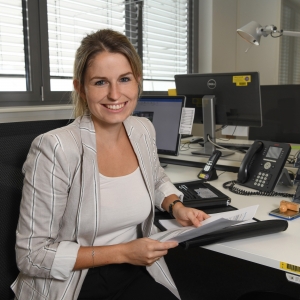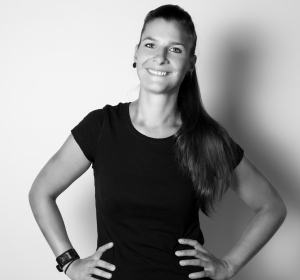ARaymond making an impact on employment for women in engineering, STEM Careers
In view of the increasing shortage of skilled workers, women are an important target group when recruiting for many manufacturing and engineering companies. We spoke to Franziska Gempp (32), HR Manager, at the international automotive supplier ARaymond in Lörrach, Germany, and the trained technical draftswoman Yvonne Maschat (34) about how the specialist for fastening and assembly solutions is doing at its German locations Lörrach and Weil am Rhein, what support the company needs from politicians, what perspectives women have, and what makes a technical profession so exciting.
Ms. Gempp, how are you affected by the shortage of skilled workers and what kind of support would you like from education policy?
Franziska Gempp: The shortage of skilled workers is of particular concern to us in the area of technical jobs. In many cases, we lack skilled workers here – such as a good electrician or a toolmaker. Against this background, the increasing academization worries us. For us, a good education is just as important as a good degree. We are currently noticing that a large number of young people immediately think in the direction of studying and that training is becoming less important. I wish that we would emphasize the value of our very good dual training system in Germany much more. One of our trainees told me that the career orientation at her high school was exclusively geared towards studying. I think schoolchildren should be aware that they can start an apprenticeship with a high school diploma and, based on that, develop further professionally. And they should be able to test whether they are more the type for scientific or practical work. For me, that would be important content that should be discussed in the career orientation phase.
What contribution does your company itself make to career orientation?
For example, we offer many internships, of course also for girls and young women. In view of the shortage of skilled workers, women are an important target group for us, as are career changers or somewhat older applicants. When it comes to women, I think the most important thing is to get them excited about technology at an early age. That's why we target girls at school and bring them into the company through campaigns such as Girls' Day or internships. We often get feedback like "Wow, I hadn't imagined it that way, that's really interesting." Or "I thought that was much more difficult." In addition to the exciting technique itself, this certainly has something to do with the fact that production conditions have changed significantly in recent years and the technical production jobs are no longer associated with heavy physical work. We have lifting aids, etc., so the jobs are suitable for everyone — men and women, but also older workers.
When the women are with you: How does, for example, a technical production job go together with the topic of children or caring for relatives — both topics in which women in particular continue to withdraw from their jobs?
We see to it that we get the best possible outcome for our employees and for us as an employer with flexible working time models – in other words, in production, for example, we talk about shift models that are suitable for childcare. In areas such as construction and development, mobile working is also possible for better compatibility. And then of course we have many part-time models, which are normal for us wherever they are feasible. We keep in touch during parental leave: Many employees come by regularly or, of course, are part of the team at events such as a Christmas party or a barbecue.
Ms. Maschat, as a trained technical draftswoman, you now work as a project manager assistant in the development of ARaymond. How did you get into this technical job?
Yvonne Maschat: I did my training as a technical draftswoman here at ARaymond (today that corresponds to the job profile of a technical product designer) and, with the support of the company, I went to evening classes to do further training to become a technical business administrator. As a result, I got my current job as a project manager assistant in construction. As a technical draftswoman, I was entrusted with developing fasteners for the automotive industry and deriving the drawings from them. As an assistant, I still design today, but I also do a lot of customer communication and know what customers want.
— Content provided by ARaymond
Women in Engineering: ARaymond’s Mareike Pollichino
While the world is becoming more equal in terms of gender equality in the workplace, in many professions it’s still very one-sided in terms of representation.
One such profession is engineering. Studies show that currently only 13 percent of engineers are women. Thankfully, many companies are working to change that, including the ARaymond Network, which manufactures assembly and fastening systems worldwide and has more than 7,000 employees.
Mareike Pollichino is an engineer who works for ARaymond in Germany as a parts designer and development engineerfor metal fasteners used in the automotive industry. She has been with the company for more than 12 years.
Pollichino says her decision to pursuing this automotive engineering as a career was a delayed decision, because initially she viewed working in the automotive field as a male profession.
“I was always curious about how things worked and was interested in the subject. But I decided very late that I wanted a technical profession in automotive. Prior to that, I had thought of other roles like media design and graphic design being for women, and automotive for men,” Pollichino said. “Thankfully my family motivated me to pursue this, including my brother who is an engineer. Through encouragement from my internship in ARaymond, I was positively surprised how open the company was to me as a young woman. After my internship, I wanted to continue my career in this field.”
News Categories
Popular Tags
Search Reviews by Make

AutoTechReviews is your home for In-depth reviews of the latest cars, trucks, and SUVs; information on all the emerging vehicle technology; and breaking news from the world of NASCAR and other motorsports.


